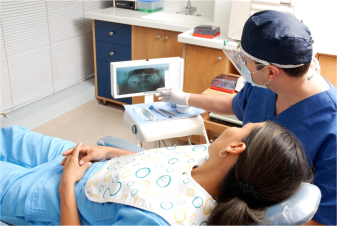
August 4, 2023, 7:25 am
Patients are not merely recipients of medical care; they are informed participants who seek a deeper understanding of their health, conditions, and treatment options. Enter data-driven patient education—a transformative approach that leverages the power of information to empower patients in making informed decisions about their well-being. In this blog, we delve into the myriad benefits of data-driven patient education, illuminating how this innovative approach can redefine the patient-provider dynamic and pave the way for a new era of healthcare collaboration.
The Evolution of Patient Education: A Paradigm Shift
Gone are the days when patient education was confined to pamphlets and brochures. The advent of data-driven technologies has ushered in a paradigm shift, reshaping patient education into a dynamic, interactive, and personalized experience. In this landscape, patients are no longer passive recipients of information; they are active participants who engage with data-driven insights to forge a path toward better health outcomes.
The Data-Driven Advantage: Unveiling the Benefits
-
Personalized Understanding: Every patient is unique, and so are their health needs. Data-driven patient education harnesses individual patient data to tailor educational content that resonates with each patient's specific condition, preferences, and goals. This personalization fosters a deeper connection and understanding, enhancing patient engagement and adherence to treatment plans.
-
Visualizing Insights: Data visualization transforms complex medical information into digestible visuals, making it easier for patients to grasp intricate concepts. Charts, graphs, and interactive models empower patients to comprehend their conditions, treatment options, and progress in a more intuitive manner.
-
Informed Decision-Making: Armed with data-driven insights, patients can actively participate in shared decision-making. They can explore various treatment alternatives, evaluate potential risks and benefits, and collaborate with healthcare providers to select the most suitable course of action.
-
Enhanced Patient-Provider Communication: Data-driven patient education fosters open and meaningful conversations between patients and healthcare providers. Patients can ask informed questions, express concerns, and seek clarifications, leading to a richer dialogue that ensures mutual understanding.
-
Empowerment and Ownership: By accessing data-driven educational resources, patients are empowered to take ownership of their health journeys. This empowerment instills a sense of responsibility and motivation, encouraging patients to adhere to treatment plans and make lifestyle changes that positively impact their well-being.
-
Real-Time Tracking: Data-driven patient education can include tools that enable patients to track their health metrics and progress in real time. This real-time feedback fosters a sense of accomplishment and accountability, motivating patients to stay on course with their health goals.
Implementing Data-Driven Patient Education
-
Data Collection: Gather patient-specific health data, medical history, and preferences.
-
Content Creation: Develop educational content that is tailored to individual patients, incorporating data-driven insights and visual aids.
-
Interactive Platforms: Utilize digital platforms and apps that allow patients to engage with personalized educational content, track their progress, and communicate with healthcare providers.
-
Patient Engagement: Encourage patients to actively participate in their educational journey, exploring data-driven insights and asking questions.
-
Regular Updates: Ensure that educational content is updated to reflect the latest data and research.
-
Health Literacy: Prioritize patient health literacy by explaining medical terms and concepts in a clear and understandable manner.
Data-driven patient education represents a transformative shift in the healthcare landscape, placing patients at the forefront of their own well-being. By harnessing the power of data, healthcare providers can offer personalized, insightful, and engaging educational resources that empower patients to make informed decisions, actively participate in their treatment plans, and embark on journeys toward better health outcomes. Embrace data-driven patient education as a catalyst for a new era of healthcare collaboration—one where patients are partners and information is the key that unlocks a healthier, more empowered future.
